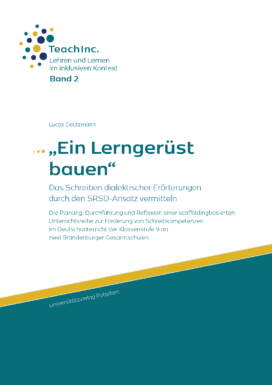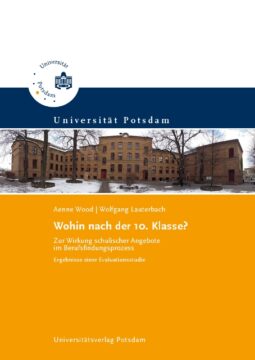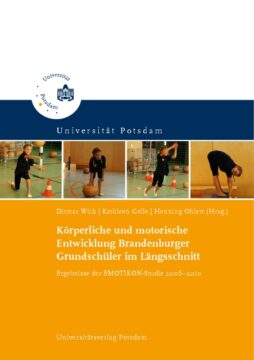Writing a pro-and-con-argumentation is a relevant writing task and is a compulsory part of the examinations for the intermediate school leaving certificate (MSA examinations) in year 10 in the subject German in Berlin and Brandenburg. However, for German non-grammar schools, there are neither scientific studies to assess writing skills in the area of pro-and-con-argumentation nor tried and tested teaching concepts for teaching this type of text.
The self-regulated strategy development approach (SRSD approach) is one way of promoting the writing skills of all pupils with the help of the scaffolding concept. For the first adaptation of the SRSD approach for the text type of pro-and-con-argumentation at non-grammar schools, this study therefore pursues the following global question: How do the series of lessons on pro-and-con-argumentations according to the Self-Regulated Strategy Development approach and the associated scaffolds as part of a research and teaching project effect the writing skills of 9th grade learning groups at two comprehensive schools in Brandenburg based on the text length and holistic text quality of pro-and-con-argumentations?
The aforementioned series of lessons on pro-and-con-argumentation was conducted within six lessons (90 minutes each) using the design-based research approach as part of the Fair Debating and Written Argumentation project. From the corpus of that project, the pro-and-con-argumentation texts of a total of seven 9th grade classes at two comprehensive schools in Brandenburg (N = 381) were extracted, including student texts from four randomised intervention groups with two different treatment sequences DE (first debating, then writing, n = 115) and ED (first writing, then debating, n = 118) as well as from three control groups (n = 148). The texts were collected longitudinally at four measurement points using four original writing tasks from MSA examinations from 2013 and 2017 and analysed as follows using a mixed-method design:
a) On a quantitative level, holistic text quality (double-blind rating on a 5-point scale) and text length are considered as indicators of writing competence of pro-and-con-argumentations at all four measurement points and mean differences at one measurement point are calculated using single-factor analyses of variance.
b) On a qualitative level, the series of lessons on pro-and-con-argumentations is described for the four intervention groups and further analysed using the trainers’ digital field notes. These digital field notes are systematically analysed using the qualitative summarising content analysis method according to Mayring (2022).
The qualitative results show that in all four intervention groups, the students go through all six phases of the series of lessons according to the SRSD approach. The creation of a motivating writing environment through the implementation of design principles – characteristic of the SRSD approach – in the series of lessons can be identified as potentially productive factors for promoting the writing skills of all students.
The quantitative results show that those students who had previously completed the pro-and-con-argumentation series of lessons (t2 and t3) had the highest text quality and text length.
Furthermore, this dissertation discusses aspects regarding the transfer of the investigated series of lessons into writing research, school practice and teacher training and further education.





